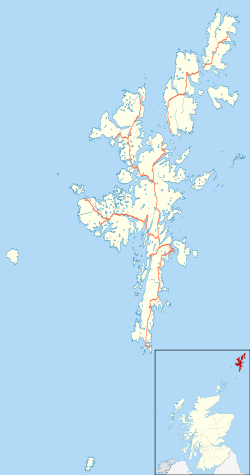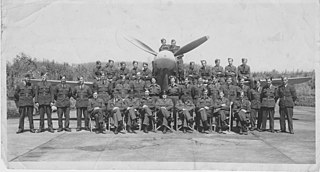
Royal Air Force Ballyhalbert or more simply RAF Ballyhalbert is a former Royal Air Force station at Ballyhalbert on the Ards Peninsula, County Down, Northern Ireland
Royal Air Force Blackbushe or more simply RAF Blackbushe is a former Royal Air Force station in Hampshire, England, during the Second World War. It is now Blackbushe Airport.
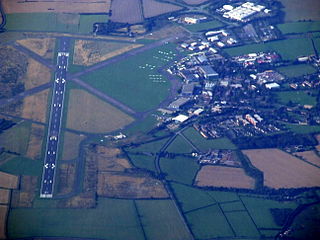
Cranfield Airport is an airfield just outside the village of Cranfield, in Bedfordshire, England. It is 7 NM south-west of Bedford and 5.5 NM east of Milton Keynes. It was originally a Second World War aerodrome, RAF Cranfield. It is now used for business aviation, private flights, and for research and development activities.
Royal Air Force Bircham Newton or more simply RAF Bircham Newton is a former Royal Air Force station located 2.1 miles (3.4 km) south east of Docking, Norfolk and 13.4 miles (21.6 km) north east of King's Lynn, Norfolk, England.
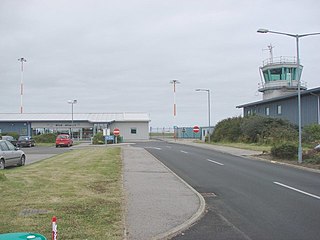
Wick John O' Groats Airport is located one nautical mile north of the town of Wick, at the north-eastern extremity of the mainland of Scotland. It is owned and maintained by Highlands and Islands Airports Limited. The airport provides commercial air travel connections for Caithness, with scheduled services to Aberdeen Airport and, until early 2020, Edinburgh. It remains regularly used by helicopters servicing local offshore oil operations and the Beatrice Offshore Windfarm. It also serves as a stop-over for light aircraft ferry flights between Europe and North America via Iceland. The airport also operates an out of hours call-out service for air ambulances, coastguard and police flights.
Royal Air Force Heathfield, or more commonly RAF Heathfield, sometimes known as RAF Ayr/Heathfield due to its proximity to Glasgow Prestwick Airport, which was also used by military flights, is a former Royal Air Force station. It opened in April 1941 as an airbase for day and night fighter squadrons. In September 1944 it transferred to Fleet Air Arm control and commissioned as HMS Wagtail. The Royal Navy paid off the airbase in March 1946 and it was reduced to care and maintenance. The United States Air Force used it for storage between 1951 and 1957, with the designation USAAF Station 570.

Royal Air Force Croft or more simply RAF Croft is a former Royal Air Force station located 4.6 miles (7.4 km) south of Darlington, County Durham, England and 8 miles (13 km) north-east of Richmond, North Yorkshire. The site is also known locally as Croft Aerodrome or Neasham. Constructed at the same time as many other airfields, it was originally named RAF Dalton-on-Tees after the nearby village Dalton-on-Tees. However, it was quickly renamed RAF Croft after initial confusion with the also newly opened RAF Dalton near Thirsk, just 25 miles away.

Royal Air Force Westhampnett or more simply RAF Westhampnett is a former Royal Air Force satellite station, located in the village of Westhampnett near Chichester, in the English County of West Sussex.
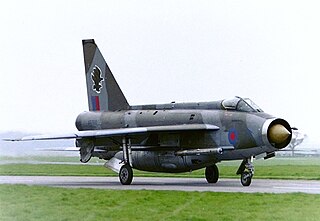
Royal Air Force Binbrook or RAF Binbrook is a former Royal Air Force station located near Binbrook, Lincolnshire, England. The old domestic site has been renamed to become the village of Brookenby. RAF Binbrook was primarily used by Bomber Command in the Second World War. The Central Fighter Establishment moved to Binbrook from RAF West Raynham between 1959 and 1962 and two English Electric Lightning squadrons were stationed there between 1965 and 1988.
Royal Air Force Dunholme Lodge or more simply RAF Dunholme Lodge was a Royal Air Force station located between the parishes of Welton and Dunholme in Lincolnshire, England.

Royal Air Force Dallachy or more simply RAF Dallachy, is a former Royal Air Force station situated east of Elgin, Moray, Scotland.

Royal Air Force Culmhead or more simply RAF Culmhead is a former Royal Air Force station, situated at Churchstanton on the Blackdown Hills in Somerset, England.

Breighton Aerodrome is a private aerodrome primarily used for general aviation flying located on the former Royal Air Force Breighton or more simply RAF Breighton, a former Royal Air Force station located near to the village of Breighton, East Riding of Yorkshire, England.
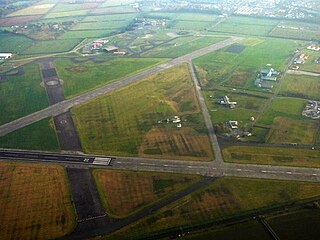
Royal Air Force Ballykelly, or more simply RAF Ballykelly, is a former Royal Air Force station which opened in 1941 in Ballykelly, County Londonderry. It closed in 1971 when the site was handed over to the British Army as Shackleton Barracks. A small part of the base has been used as a refuelling point by army helicopters and small fixed-wing aircraft usually operating out of Joint Helicopter Command Flying Station Aldergrove near the town of Antrim.

Royal Air Force Bradwell Bay or more simply RAF Bradwell Bay is a former Royal Air Force station located 9.5 miles (15.3 km) east of Maldon, Essex, England and 3.1 miles (5 km) south west of West Mersea, Essex.
Royal Air Force Skitten or more simply RAF Skitten is a former Royal Air Force satellite station directly east of the village of Killimster, located 5.1 miles (8.2 km) north east of Watten, Caithness, Scotland, and 4.7 miles (7.6 km) northwest of Wick, Caithness, Scotland. On 19 November 1942, Operation Freshman departed from RAF Skitten.
Royal Air Force Peterhead or more simply RAF Peterhead is a former Royal Air Force sector station located 2.4 miles (3.9 km) east of Longside, Aberdeenshire and 3.4 miles (5.5 km) west of Peterhead, Aberdeenshire, Scotland.
Royal Air Force Banff or more simply RAF Banff is a former Royal Air Force station located 4 miles (6 km) west of Banff, Aberdeenshire, Scotland and 14 miles (23 km) northeast of Keith, Moray.

Royal Air Force Church Fenton or RAF Church Fenton is a former Royal Air Force (RAF) station located 4.3 miles (6.9 km) south-east of Tadcaster, North Yorkshire, England and 6.3 miles (10.1 km) north-west of Selby, North Yorkshire, near the village of Church Fenton.
Royal Air Force Skeabrae, or more simply RAF Skeabrae, is a former Royal Air Force station located in Orkney, Mainland, United Kingdom.
